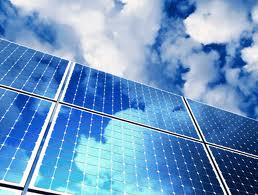Having concerns about your solar power performance this winter? Here, we will ease your mind on how solar panels work in winter.
The Clean Energy Regulator recently reported that the number of Australian households with solar power systems passed the one million mark in March 2013. These forward thinking people are now getting cheaper power, and collectively, are saving around a half a billion dollars per year on their electricity bills. However, with the onset of winter, the newly converted are waiting in anticipation for the impact the shorter days and cooler weather will have on the performance of their solar panels.
Will shorter days and cooler weather reduce solar power production?
Of course, shorter days will provide fewer hours of sunlight to be converted into power. However, long, hot summer days don't provide the optimal performance of solar panels, as one would expect. The efficiency of solar panels is actually reduced when temperatures exceed 25 degree Celsius. When solar panels are installed, they need to have a few inches of space between the roof and the system, to allow for airflow to cool the panels. An important module specification is called 'temperature coefficient'. This means if the temperature coefficient rating of a panel is -0.46%, each degree over standard testing conditions (STC - 25 degrees Celsius) the module's output is reduced by -0.46%. Therefore, a cold day, with clear, blue skies, will, in fact, give the best performance.

What will give a negative effect on the performance of solar panels?
The main enemy of solar power is shade. Poor design or improper positioning can mean even a small amount of shade, on just one panel, can shut down the energy production of the other panels. The same applies if the day consists of drizzle and cloud. Winter weather will only affect the production of power if these conditions prevail. Cool temperatures and direct sunlight are optimal conditions for producing solar power.
Correct positioning
The incorrect positioning of your solar panels can have an even greater effect on your solar power production. In Australia, they should be installed on the roof pitch facing north, allowing them to capture maximum sunlight. You can also achieve a higher output in winter by tilting your panels slightly, to capture the lower angle of the winter sun.
Good news for solar power users
To summarise: for solar power system owners, a clear sky on a winter's day - however cold or short it may be - you will still be able to warm your feet AND save money on ever increasing power bills.
It's not too late to take advantage of Solar Power savings. Call us today on or complete our Booking Form and one of our friendly team will contact you.